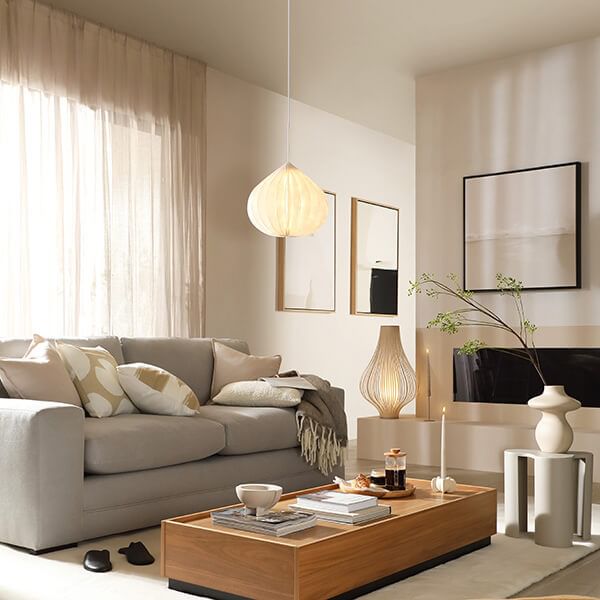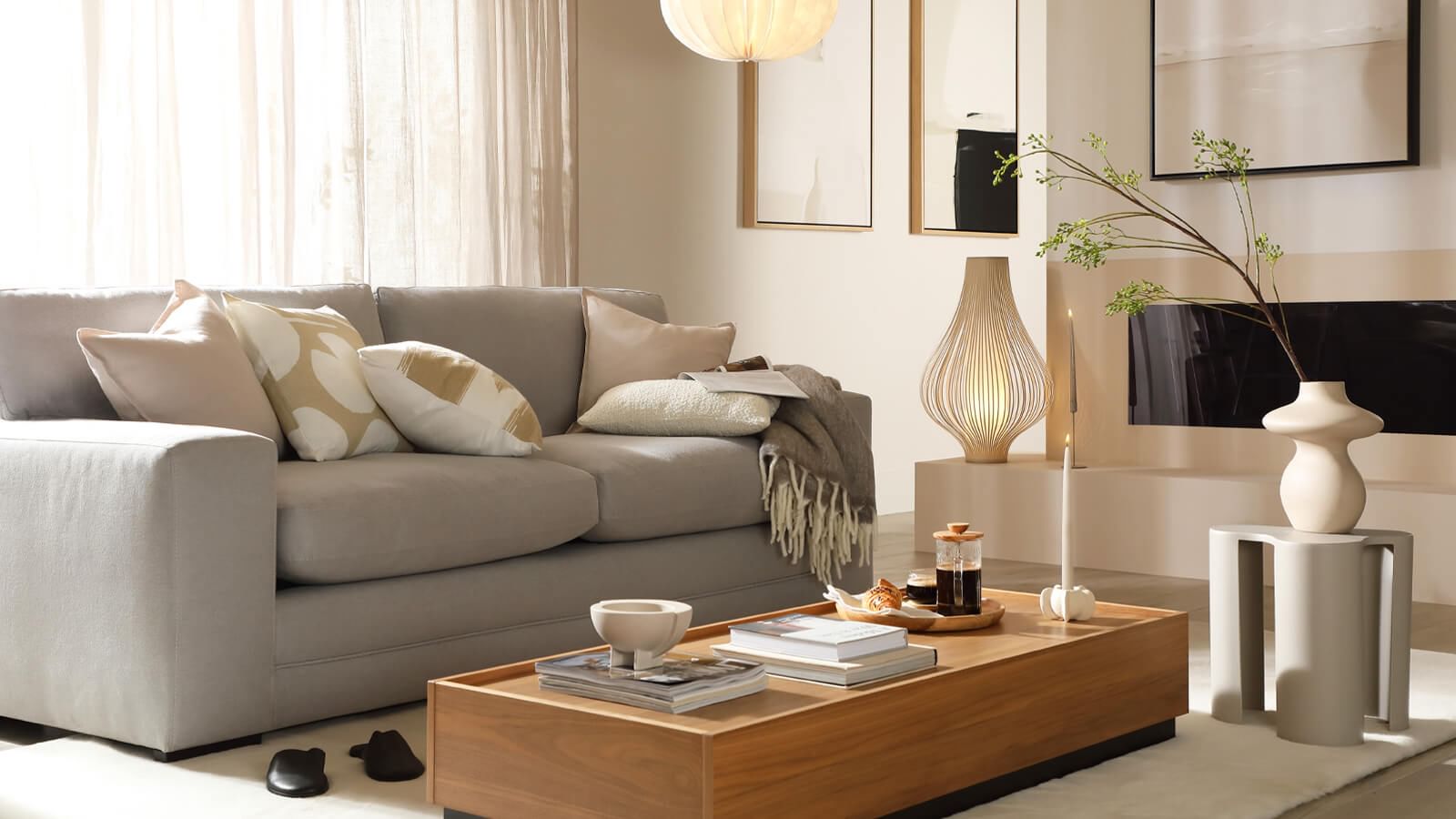It’s easy to fall in love with Japandi interiors - they’re calming, minimalist and with purpose. With its close connection to nature , Japandi isn’t just about chic aesthetics but feeling at peace in your home.
Amthal Karim, Head of Design at Furniture And Choice comments on how to style this trend like a designer:

“Even though Japandi interiors may seem like the cool kid on the design block, it’s far from intimidating. It takes the most meaningful elements of Wabi Sabi philosophy and Scandinavian hygge to create a style that centres on comfort and tranquillity.
Japandi’s strength lies in its simplicity. Its Scandi roots emphasise curating your décor while the Wabi Sabi connection values beauty in imperfection. This means that even though you have a minimalist interior that feels refined, there is a rustic element that makes the space feel lived-in and cosy instead of cold and uninviting.

So what’s the best way to start? Decluttering your home is essential in bringing Japandi’s minimalist aesthetic to life. This is what makes Japandi interiors look so stylish without having to blow your budget. Putting purpose first when choosing furniture and accessories will help set the mood of your space. For example, choose a sofa or armchair with clean lines or soft curves to bring out Japandi’s sleek yet simple feel. Tie this together with soft upholstery like cotton, linen or boucle to amp up the cosiness.
A neutral colour palette is essential in creating the Japandi look. Textured wallpaper in a neutral hue is one way to bring this element to life. If you prefer a light base for sofas go for cream, taupe, beige, oatmeal, ivory and light brown. You can also go darker with browns, stone shades and greys to make a more moody statement. However, it’s best to avoid ‘loud’ colours like red or orange to keep it understated.
It’s no secret that traditional Japanese interiors exude a sense of peace and calm. This is because of its link to biophilic design where you bring the outdoors in through interiors - and Japandi is no different. One easy way is to incorporate wooden accents throughout your home like a coffee table, chairs or even a bowl. Besides wood, textures like stone tiling or linen upholstery also help create a tranquil space and ground us in the present.

When we talk about layering in Japandi design, this is where Wabi Sabi comes into play. It’s a lifestyle philosophy that celebrates the unique or handmade so bring in personal touches through soft furnishings, artwork or accessories. If you have pieces that have been passed down like old ceramics or trinkets from your travels, display them proudly. If you’re in the mood to shop, there’s always the thrill of browsing vintage markets and finding a piece (or three) with a piece of history attached to it.

The best kept secret about giving Japandi a designer look is in the lighting. Get the ‘Japandi glow’ with round paper lantern lights or lamps which fit right in with the room’s clean, minimal aesthetic. Pendant lighting is also a good way to highlight specific areas of your home like your kitchen-diner or reading corner. Besides ceiling lights, table lamps are another option for brightening your interior giving you the flexibility to move the lamps around. Basically, you want to bring warmth and cosiness to your interiors to make it feel like you never want to leave home!”
Read our guide to Japandi interiors for more ways to achieve this look at home.



